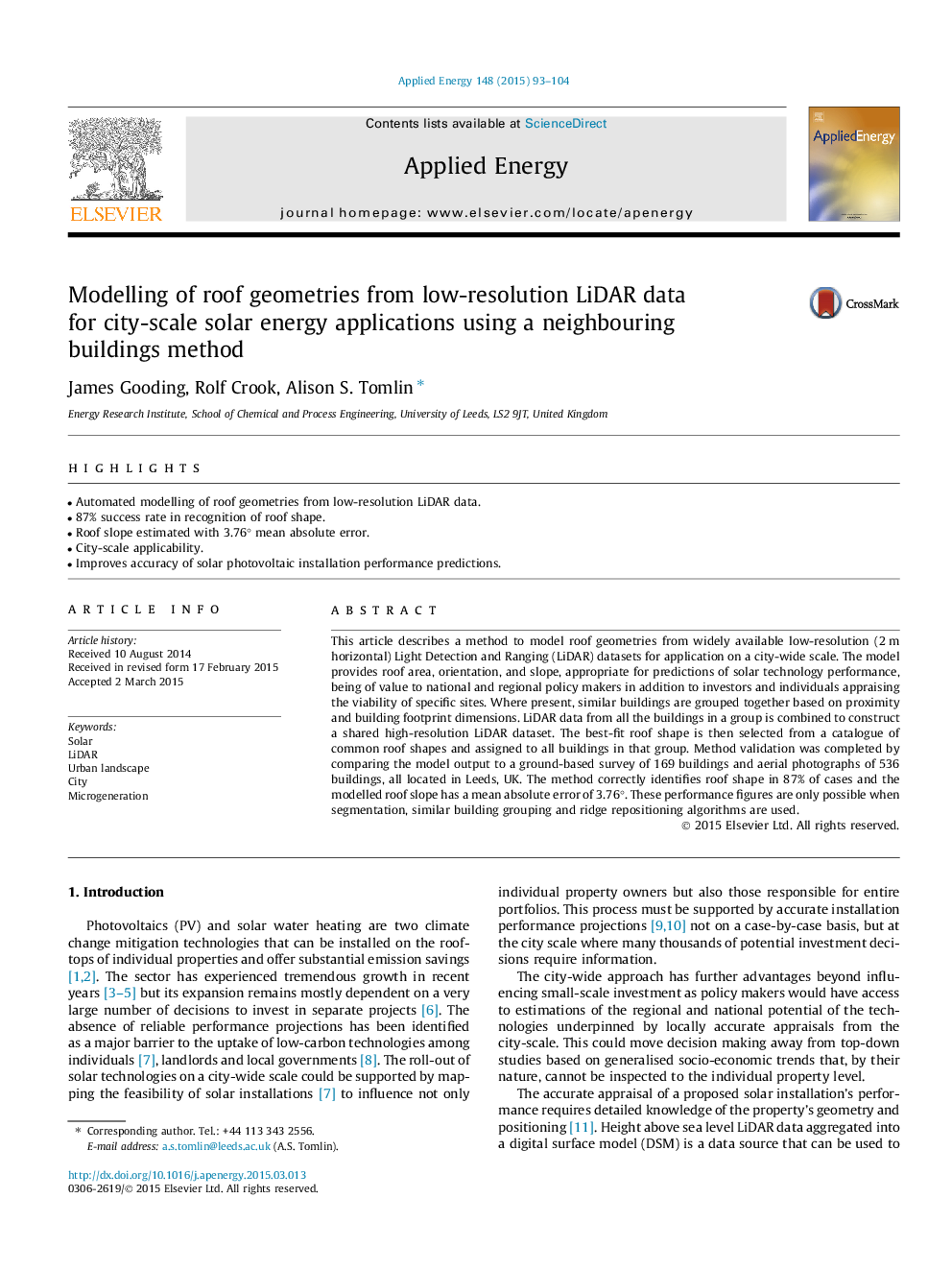| Article ID | Journal | Published Year | Pages | File Type |
|---|---|---|---|---|
| 6687250 | Applied Energy | 2015 | 12 Pages |
Abstract
This article describes a method to model roof geometries from widely available low-resolution (2 m horizontal) Light Detection and Ranging (LiDAR) datasets for application on a city-wide scale. The model provides roof area, orientation, and slope, appropriate for predictions of solar technology performance, being of value to national and regional policy makers in addition to investors and individuals appraising the viability of specific sites. Where present, similar buildings are grouped together based on proximity and building footprint dimensions. LiDAR data from all the buildings in a group is combined to construct a shared high-resolution LiDAR dataset. The best-fit roof shape is then selected from a catalogue of common roof shapes and assigned to all buildings in that group. Method validation was completed by comparing the model output to a ground-based survey of 169 buildings and aerial photographs of 536 buildings, all located in Leeds, UK. The method correctly identifies roof shape in 87% of cases and the modelled roof slope has a mean absolute error of 3.76°. These performance figures are only possible when segmentation, similar building grouping and ridge repositioning algorithms are used.
Related Topics
Physical Sciences and Engineering
Energy
Energy Engineering and Power Technology
Authors
James Gooding, Rolf Crook, Alison S. Tomlin,
